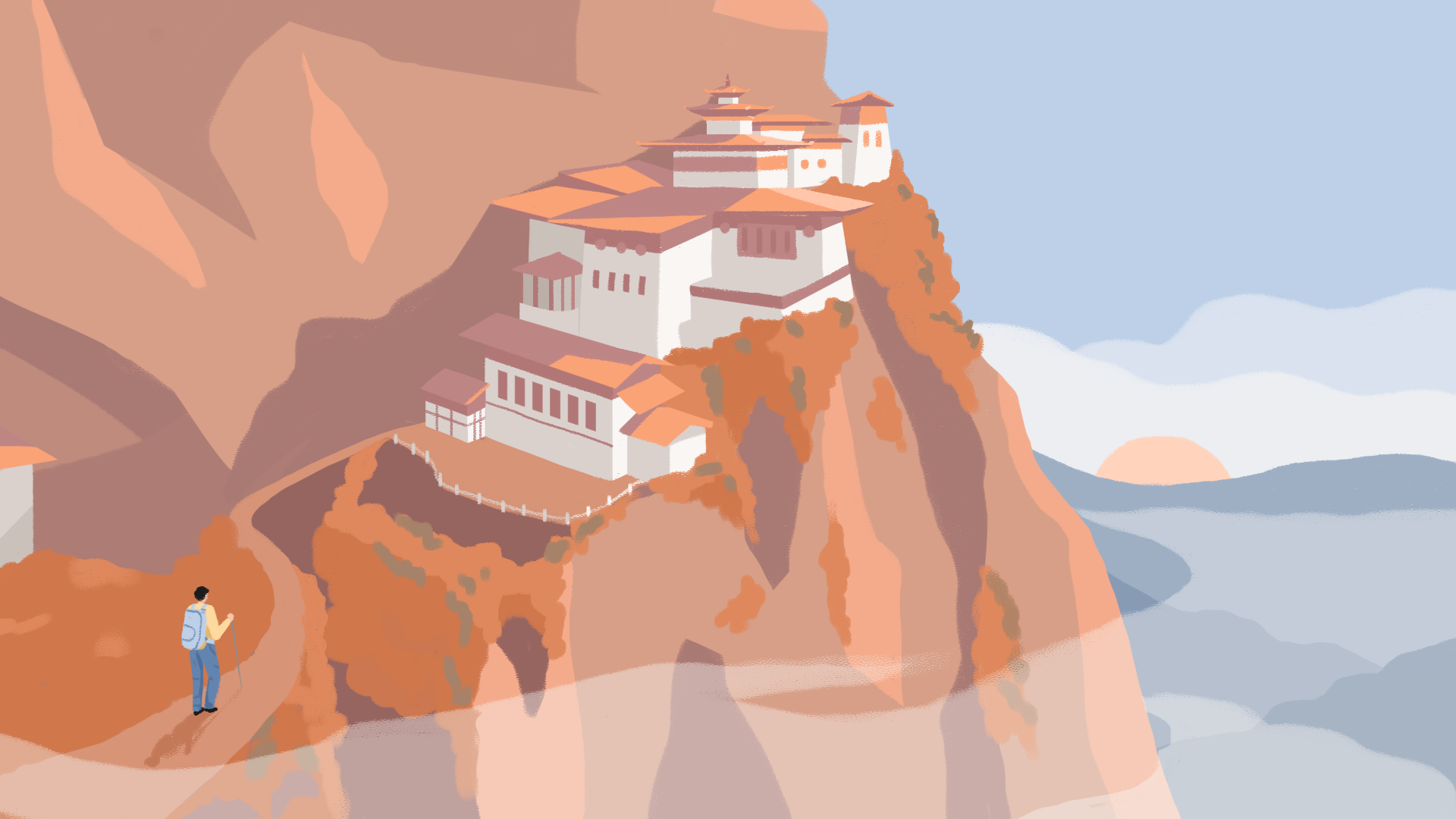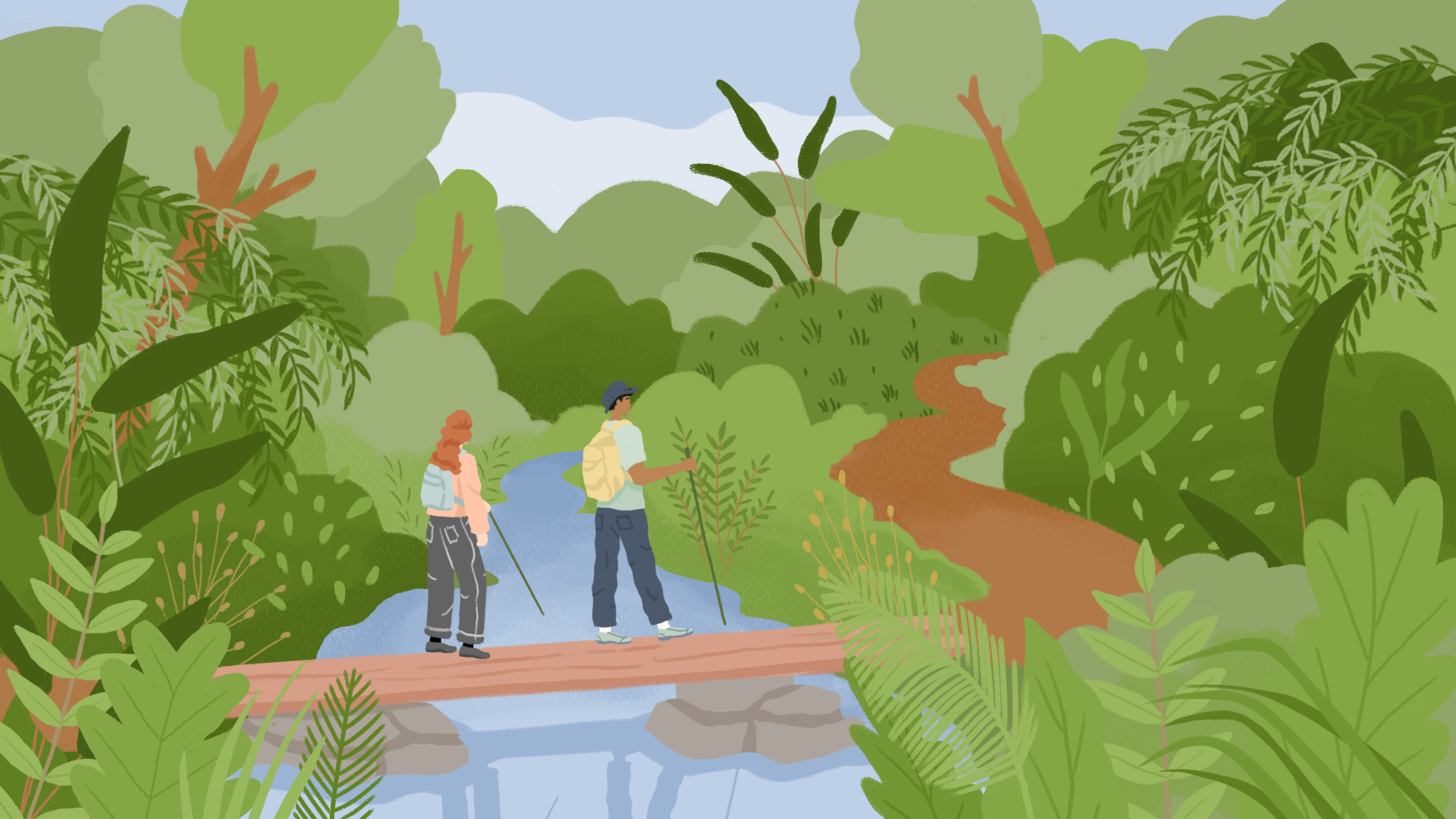Active, local, regenerative — there are many boxes that walking holidays tick, and it’s why there’s a growing interest in them the world over.
Spread over days, spanning the length and breadth of countries, walking holidays take you into the heart of a destination, bringing you face-to-face with local communities and offering up one-of-a-kind experiences along the way. These tailor-made trips provide the communities you visit with additional income streams while also giving them an incentive to preserve and showcase their unique customs and traditions.
Read on for three trails to get you going. And as always, check for travel guidelines and closures before planning your trip.
Astungkara Way, Bali
The Astungkara Way gives visitors a taste of Balinese life in its verdant villages, far from its crowded beaches. The 84-mile route spans from Pererenan in the south to Seririt in the north and was conceived by Tim Fijal, a Canadian environmentalist who moved to the country more than a decade ago.
Although Bali is an agrarian society, over the years, tourism has swallowed large swaths of agricultural land. The Astungkara Way was developed to bring tourists closer to nature and help local agricultural communities.
On the trails of the Astungkara Way, visitors are encouraged to tread slowly and lightly while experiencing the true essence of Bali. There are ample opportunities to connect with local communities that practice regenerative agriculture.
Learning where the food on your plate comes from, and the effort it takes to produce sustainably, can be both illuminating and life changing. Participants are encouraged to try their hand at activities like foraging, learning how to create a composting facility, or helping out as farmhands.
But the journey is not all work and no play: The trail takes participants through the sylvan countryside into lush jungles with gurgling streams and gushing waterfalls. When the sun goes down, there’s plenty of opportunity to relax and connect with fellow travelers over meals and through stories and group activities.
Trans Bhutan Trail, Bhutan

The 250-mile Trans Bhutan Trail cuts right through the magical Himalayan Kingdom of Bhutan, stretching from Haa in the west to Trashigang in the east. Dating back to at least the 16th century, the trail was in use until the 1960s, after which it lay neglected and forgotten. Before the advent of roads, it was the only way pilgrims, messengers, armies and traders could traverse the country.
Owing to a special mandate of the king, the trail was carefully restored and opened to visitors. Now tourists can experience Bhutan by walking this route that passes through mystical cloud forests and over ancient bridges, stopping at remote monasteries and villages seemingly cut off from the rest of the world.
The route wears a different look according to the seasons. It’s particularly spectacular in the spring when thousands of rhododendrons burst to life.
Walking the route is also the best way to see firsthand the emphasis the country places on sustainability and conservation. All profits from the trail are ploughed back into research, education and community development.
Begin your adventure in Paro, and choose to do the whole trail or sections of it in either direction. To amp up the challenge, you can run or bike, or keep it to a stroll for a more leisurely adventure.
Jordan Trail, Jordan

Jordan has always been at the center of things, given its prime position on the King’s Highway, a trade route that linked Egypt to the regions farther north. Today, hikers and outdoor enthusiasts can traverse the Jordan Trail, which runs from Umm Qais in the north to Aqaba on the country’s southern tip, building on an existing walking route that in its heyday was plied by traders and merchants.
Almost all of Jordan’s cultural landmarks are spread out from one another, and most visitors cover the distances between them in vehicles. But the Jordan Trail encourages visitors to take it slow and walk through the country’s diverse and magical outdoors, exploring its cultural and historical wonders while also interacting with the many Bedouin tribes who live along the route.
In the north, travelers encounter grassland-cloaked hillsides, olive trees and forests. Farther south await the hidden wadis of the Dana Biosphere Reserve, the magical ruins of Petra, the otherworldly landscape of Wadi Rum, and finally, the shimmering waters of the Red Sea. End to end, the trail takes 40 days of hiking, passing through 75 villages and towns, allowing visitors to experience the splendid natural and historical riches of Jordan.
The well-marked route can be done in its entirety or in parts. Begin your adventure in Amman, and toward the end, treat yourself to some downtime in Aqaba with the glorious Red Sea for company. If the lure of Aqaba is hard to resist, you can begin there and make your way up north.




